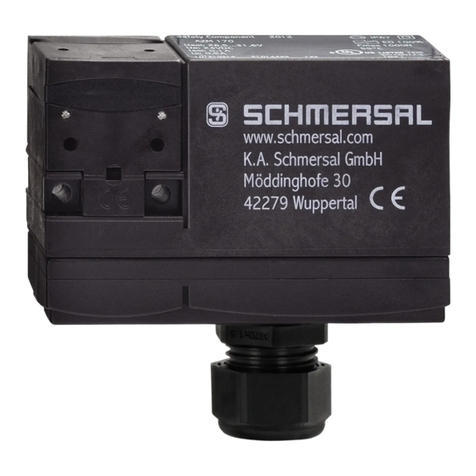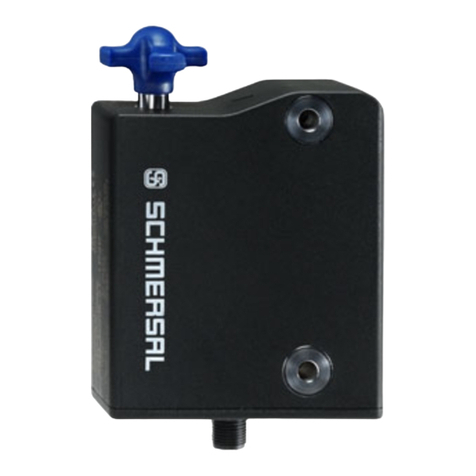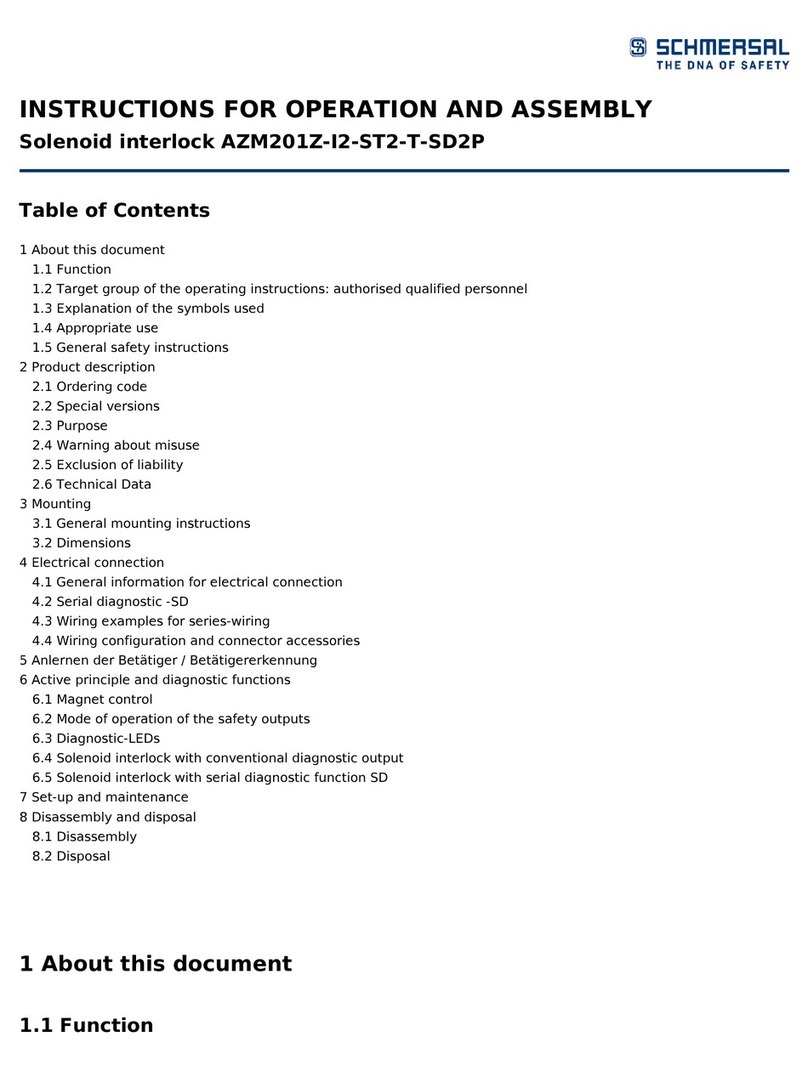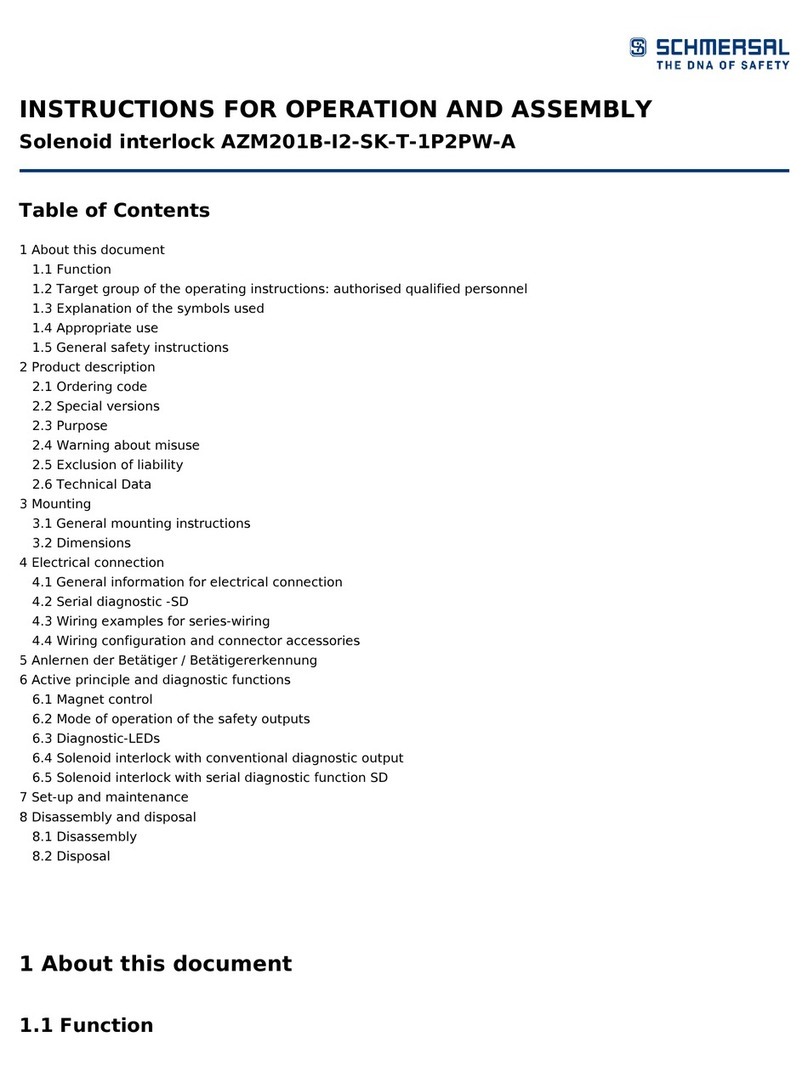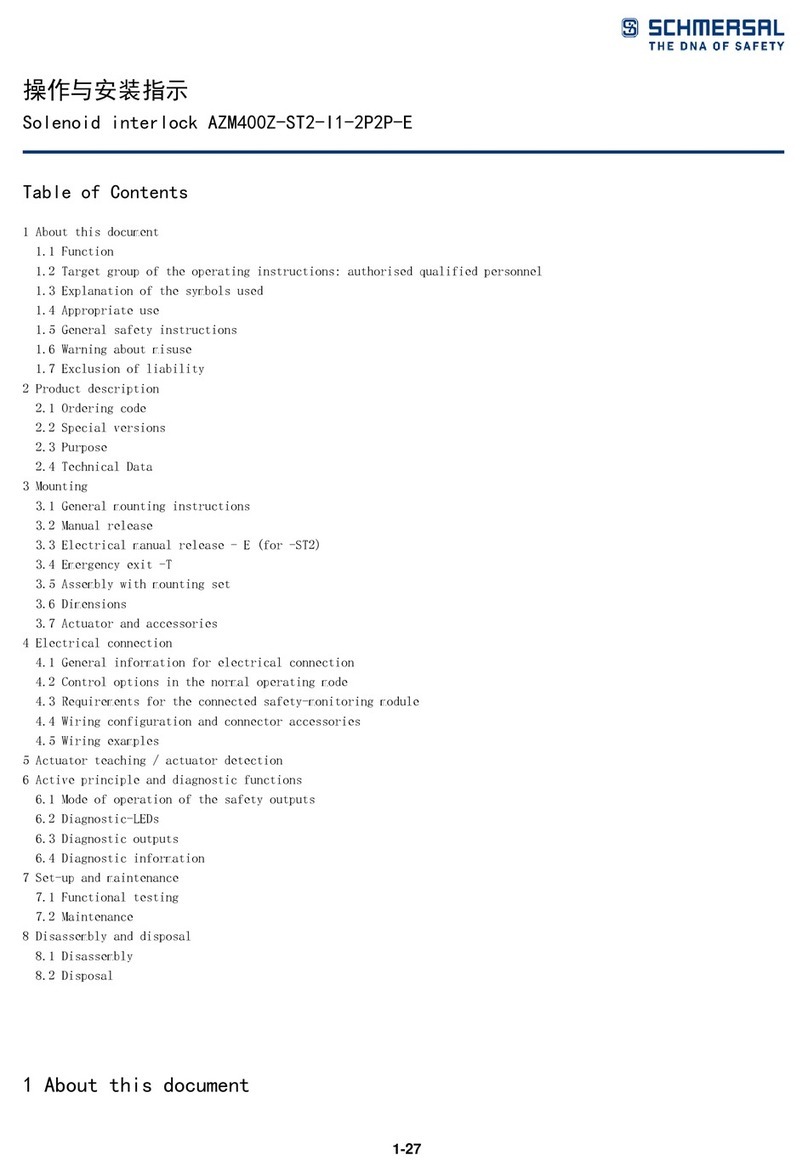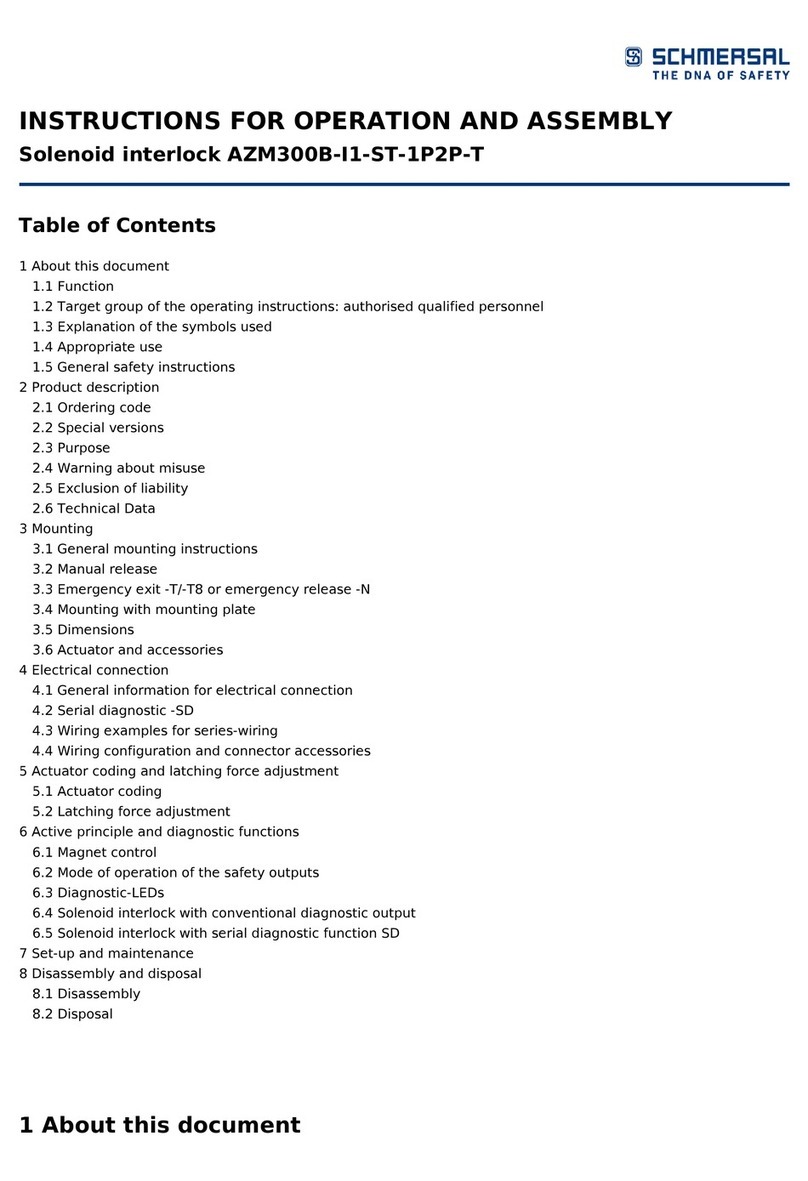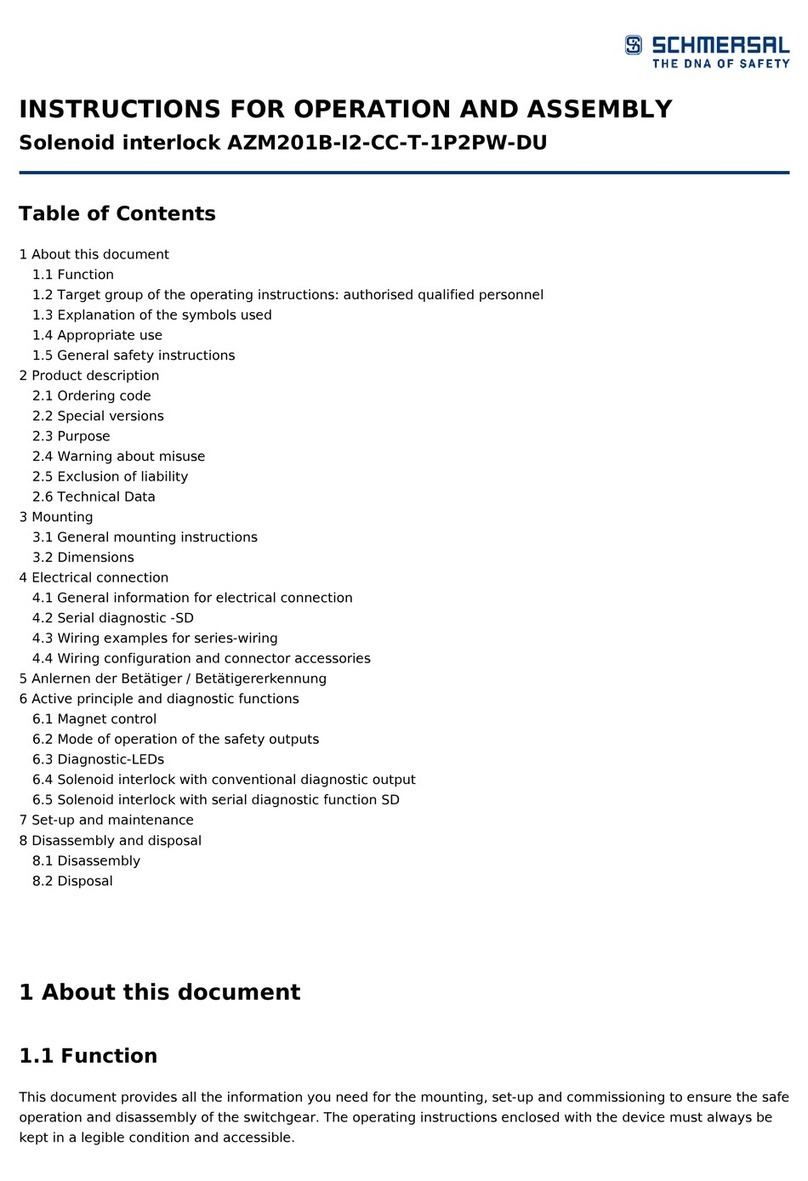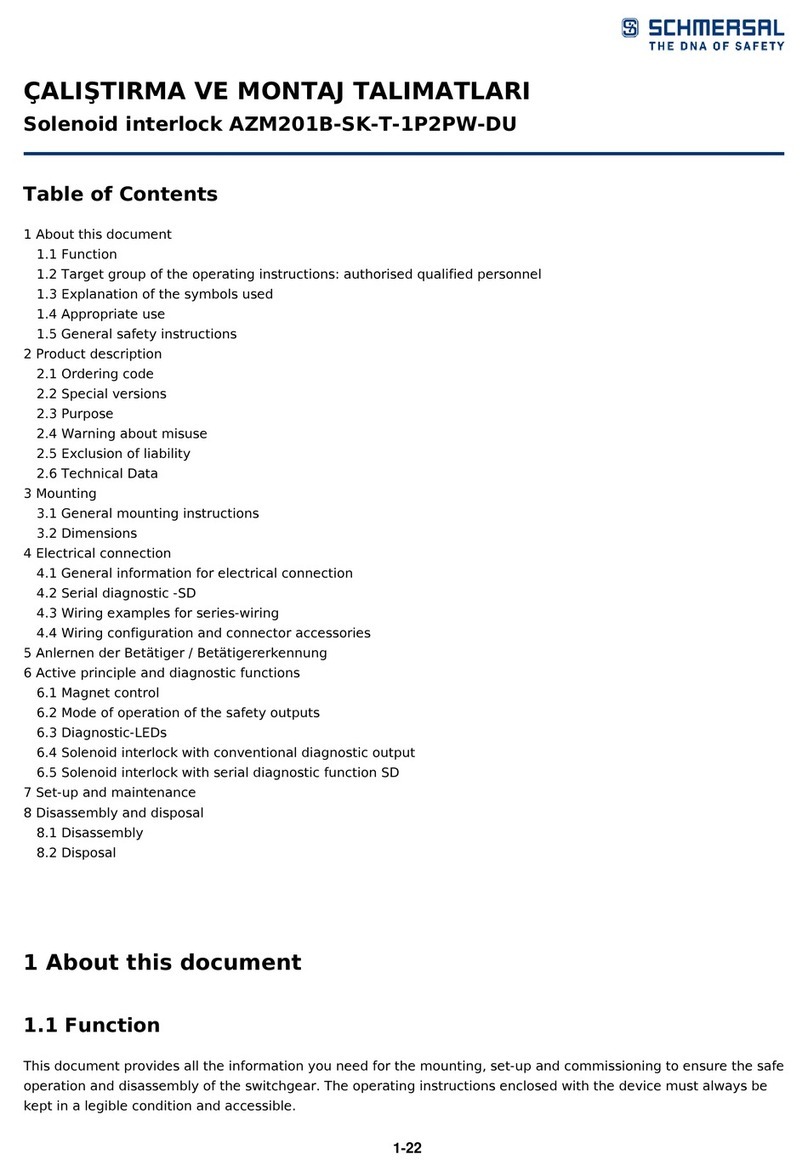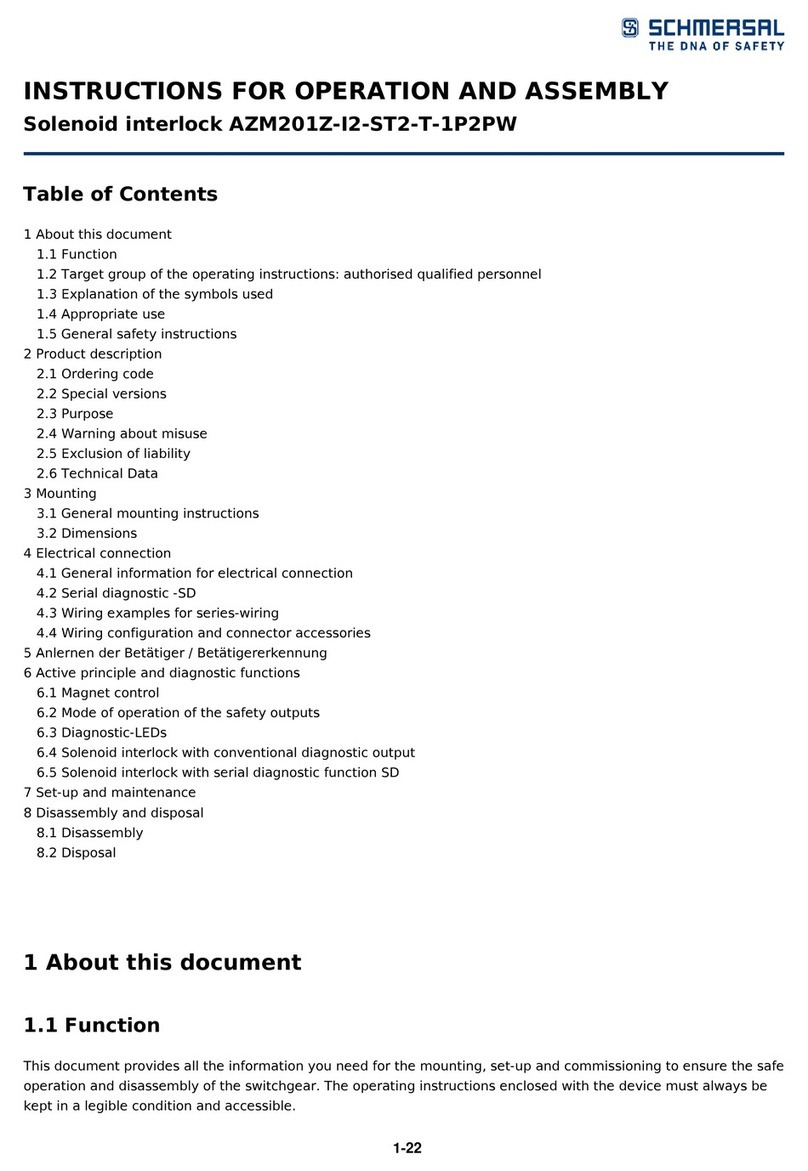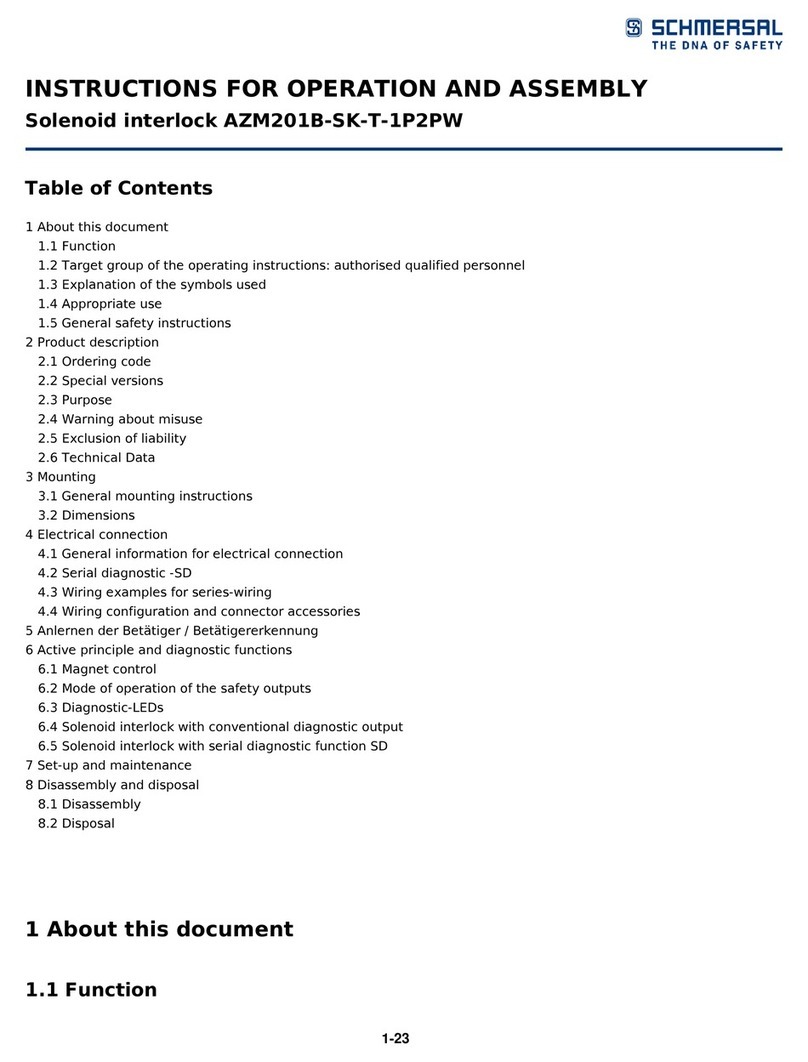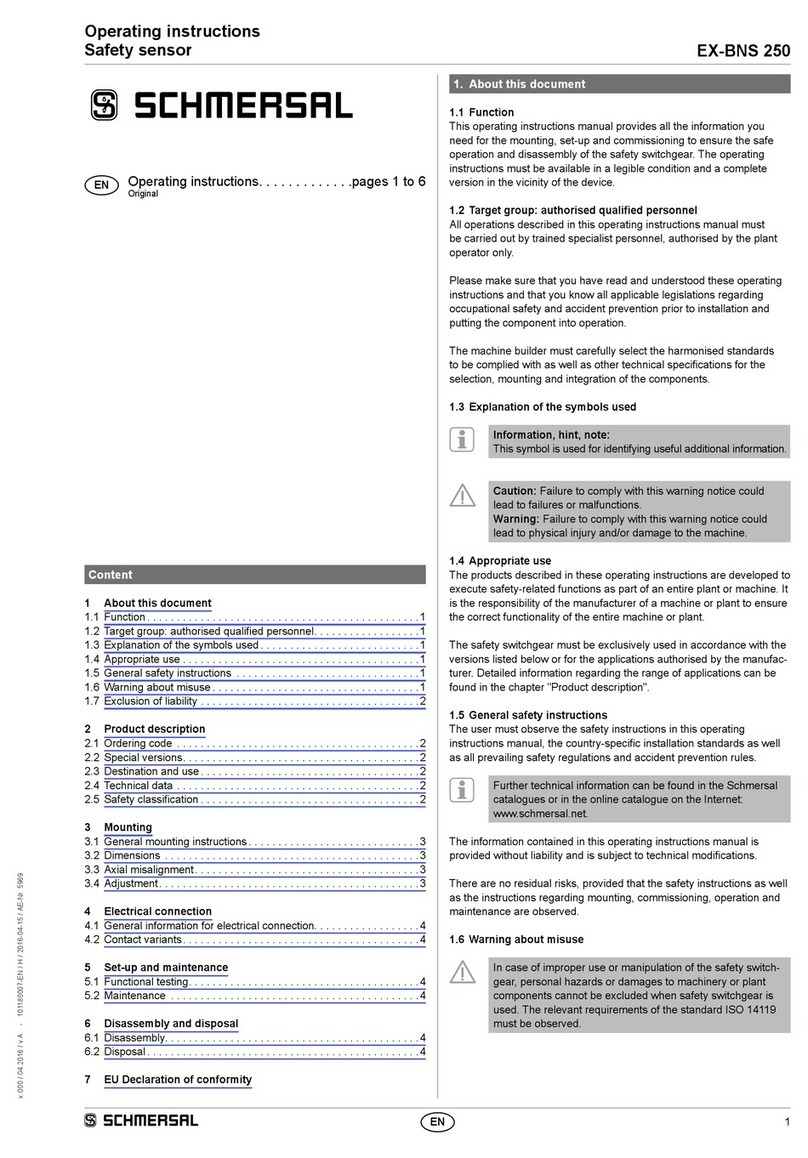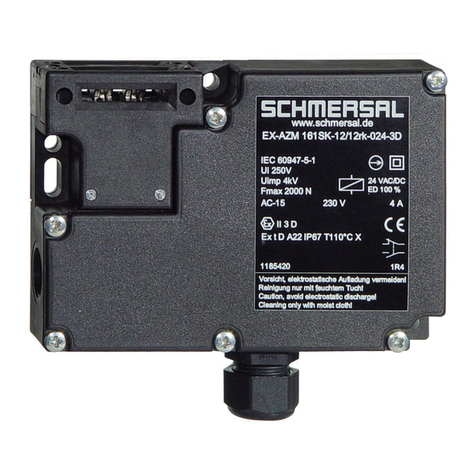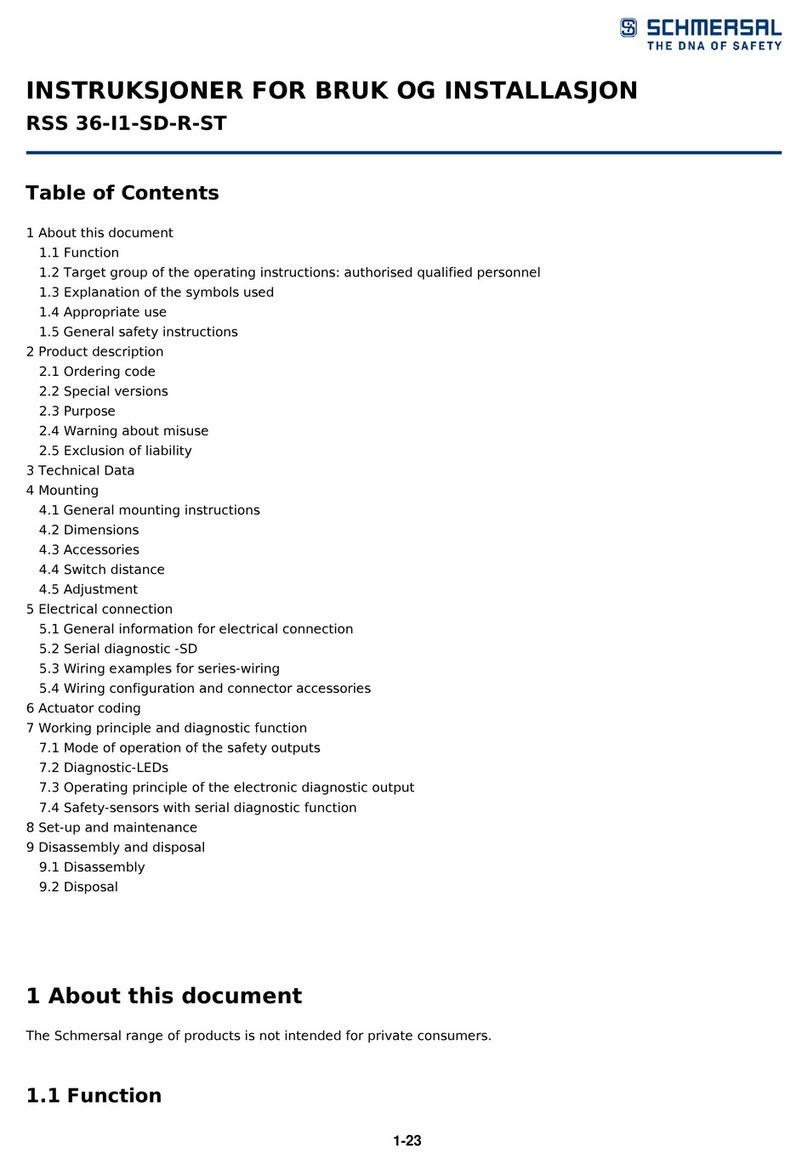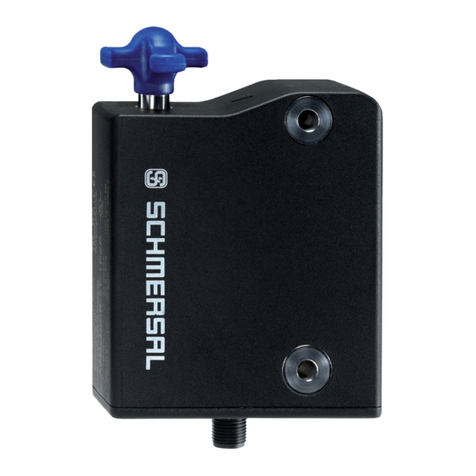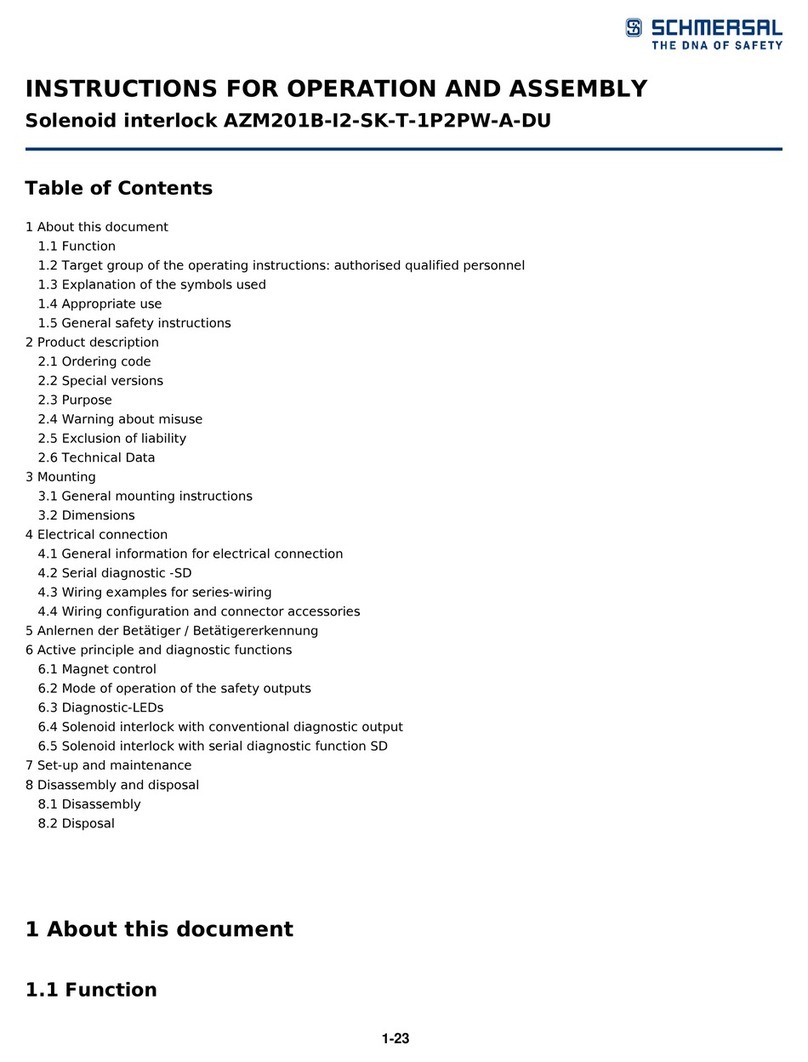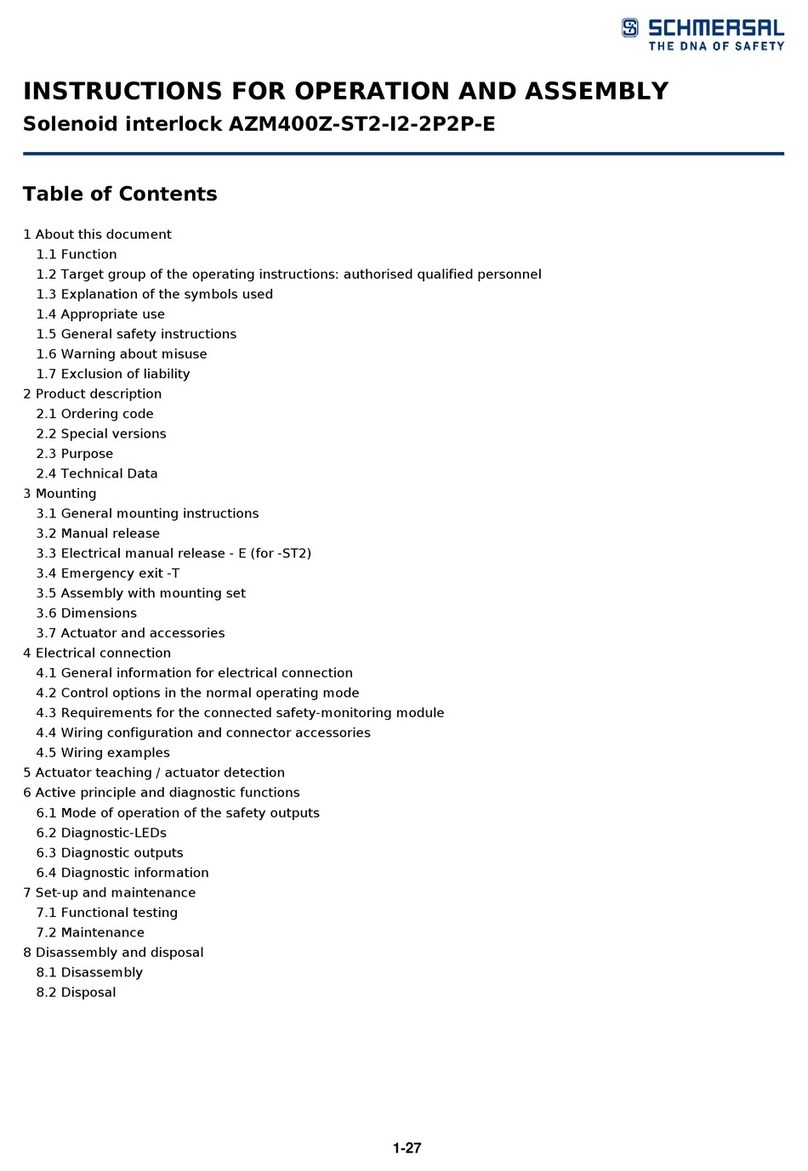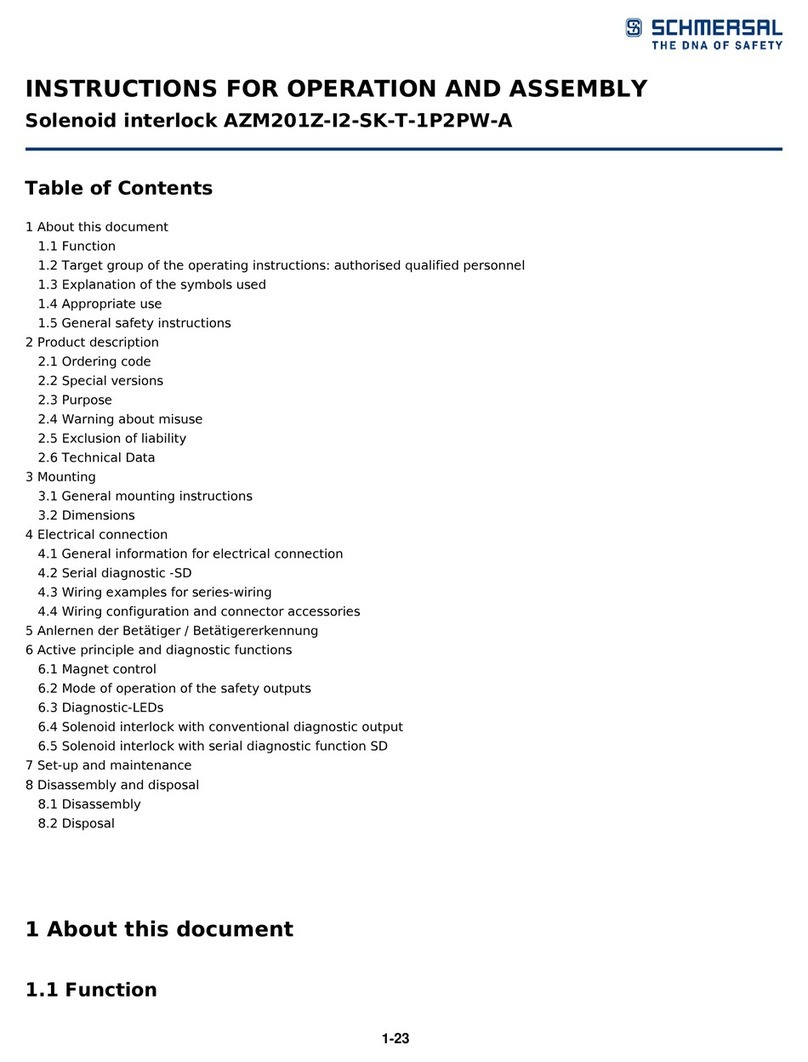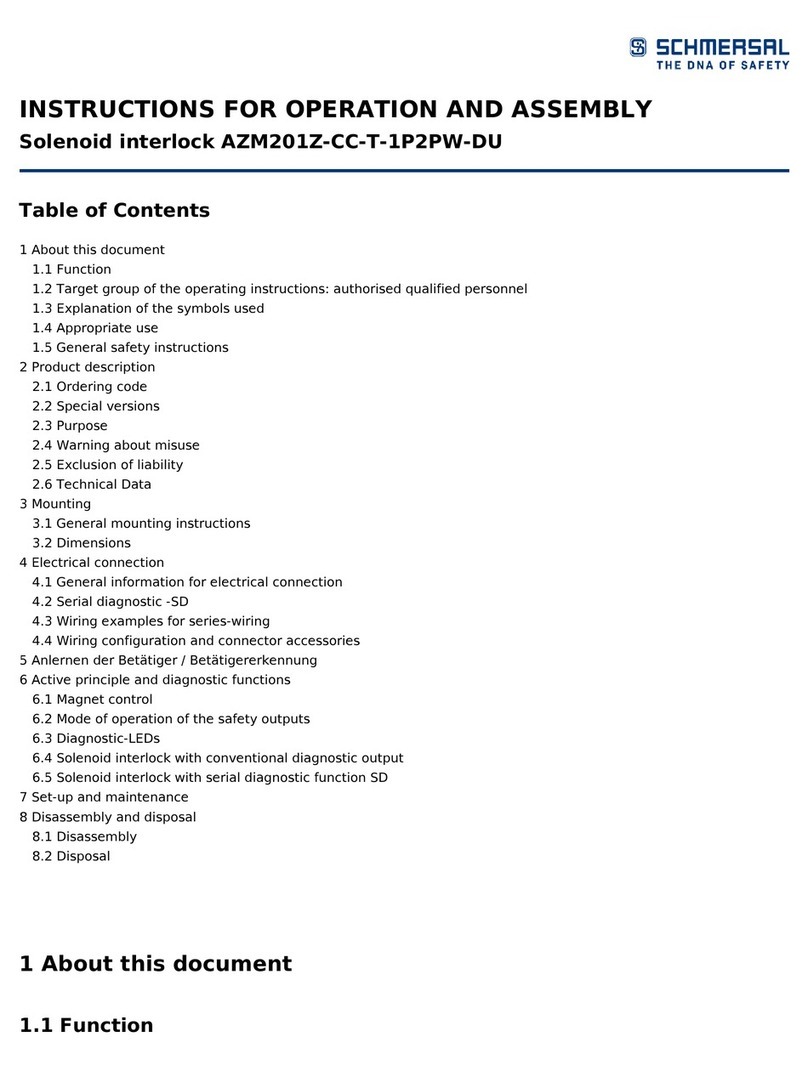
3
AZM190
Operating instructions
Solenoid interlock
EN
2.4 Technical data
Standards: IEC 60947-5-1, ISO 14119
Enclosure: glass-fibre reinforced thermoplastic
Actuator and locking bolt: galvanised steel / zinc die-cast
Holding force Fmax:2,550 N
Holding force FZh: 1,950 N
Latching force: 20 N
Coding level according to ISO 14119: low
Protection class: IP67
- Ordering suffix N and T: IP65
Contact material: Silver
Contact type: change-over contact with double break, or 2 NC
contacts, with galvanically separated contact bridges
Switching system:
A
IEC 60947-5-1, slow action,
NC contact with positive break
Connection: screw terminals
Cable type: solid and stranded wire
Cable section: 0.5 - 2.5 mm2
(max. 1.5 mm2with wire end ferrules)
Cable entry: 2 x M20
Rated impulse withstand voltage Uimp: 4 kV
- Device with 4 contacts or 3 contacts with LED: 1.5 kV
Rated insulation voltage Ui:250 V
- Device with 4 contacts or 3 contacts with LED: 60 V AC
Thermal test current Ithe:4 A
Utilisation category: AC-15, DC-13
Rated operating current/voltage Ie/Ue: 4 A/230 V AC
4 A/24 V DC
- Devices with 4 contacts: 4 A/24 V AC
4 A/24 V DC
- Devices with LED: 4 A/24 V DC
Max. fuse rating: 4 A gG D-fuse to IEC 60269-1
Required short-circuit current: 1,000 A
Positive break travel (unlocked): 2 × 3.5 mm
Positive break force (unlocked): 20 N
Magnet switch-on time: 100 %
Rated control voltage Us:24 V DC,
24 V AC / 50/60 Hz,
48 V AC / 50/60 Hz,
110 V AC / 50/60 Hz,
230 V AC / 50/60 Hz
Power consumption: max. 8.5 W
Actuating speed: max. 20 m/min
Actuating frequency: max. 1,200/h
Ambient temperature: 0°C … +50°C
Mechanical life: 1 × 106operations
Listed 15 HA - Industrial Control Equipment - Enclosure
Type I. Use copper wire only. Use 60/75° wire only.
Tightening torque 0.8 Nm. The hub shall be connected to
the conduit before it is connected to the enclosure.
( not valid for LED-version -G.)
2.5 Safety classification of the interlocking function
Standards: ISO 13849-1
Envisaged structure:
- Basically: applicable up to cat. 1 / PL c
- With 2-channel usage applicable up to cat. 3 / PL d
and fault exclusion mechanism: with suitable logic unit
B10D NC contact: 2,000,000
B10D NO contact at 10% ohmic contact load: 1,000,000
Mission time: 20 years
TF
D
10Dopop
op
n
(Determined values can vary depending on the application-specific
parameters hop, dop and tcycle as well as the load.)
If multiple safety components are wired in series, the Performance
Level to ISO 13849-1 will be reduced due to the restricted error
detection under certain circumstances.
2.6 Safety classification of the guard locking function
If the device is used as an interlock for personal safety, a safety
classification of the guard locking function is required.
When classifying the interlock function, a distinction must be made
between monitoring of the interlock function (locking function) and
controlling the unlocking function.
The following safety classification of the unlocking function is based on
the application of the principle of safety energy disconnection for the
solenoid supply.
The classification of the release function is only valid for
devices with monitored guard locking function and in the
power to unlock version (see ordering code).
A fault exclusion for the locking device of the solenoid interlock can be
assumed by a safety external energy disconnection.
In this case, the locking device of the solenoid interlock does not have
an effect on the failure probability of the unlock function.
The safety level of the unlock function is determined exclusively by the
external safety power shutdown.
A1
A2
+24 VDC
PL ?
PFHd?
0 VDC
Safety power
shutdown
Solenoid
interlock
Guard locking
function
Fault exclusion with regard to wiring routing must be
observed.
If for a certain application the power to unlock version of
a solenoid interlock cannot be used, for this exception an
interlock with power to lock can be used if additional safety
measure need to be realised that have an equivalent safety
level.
